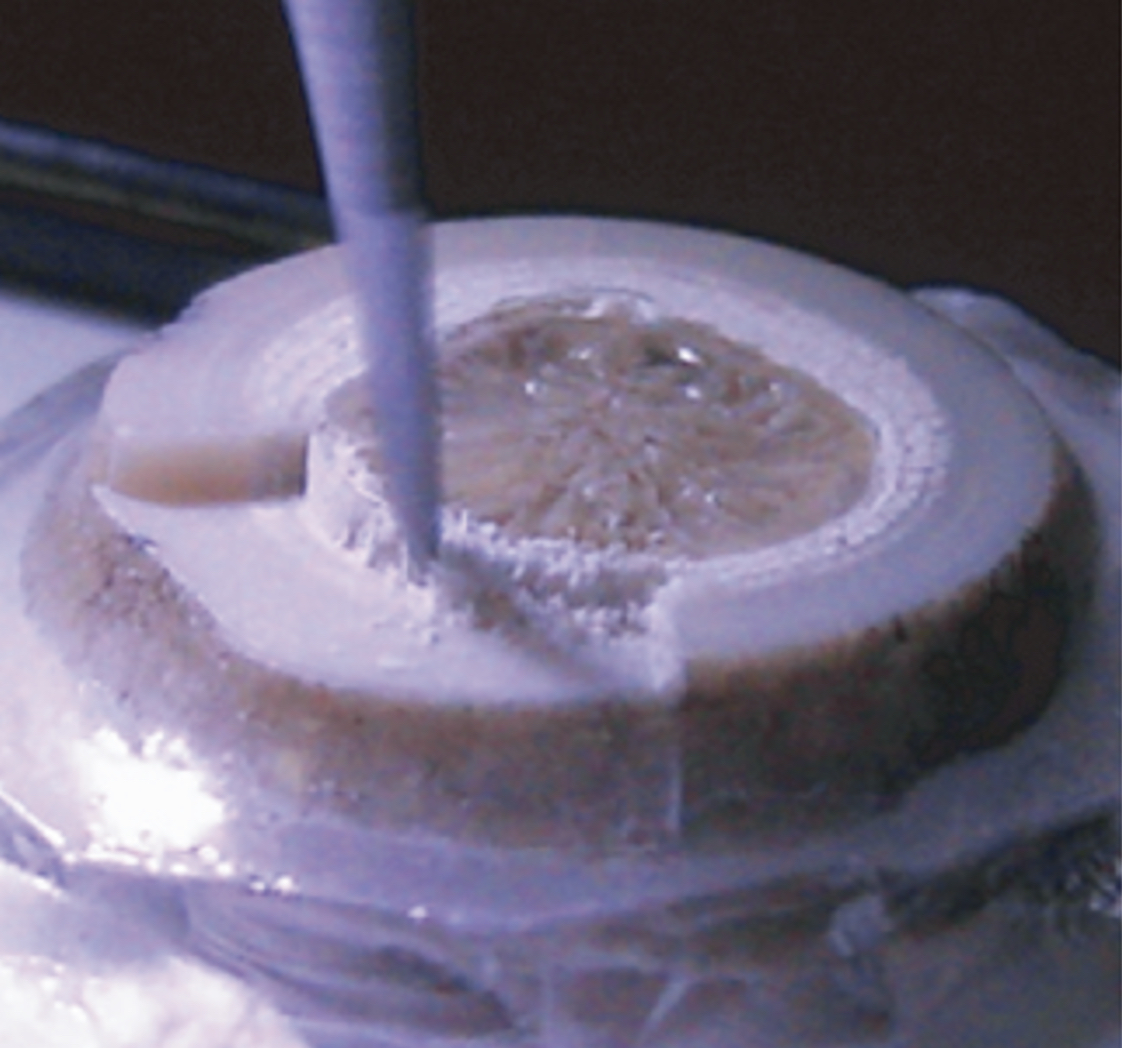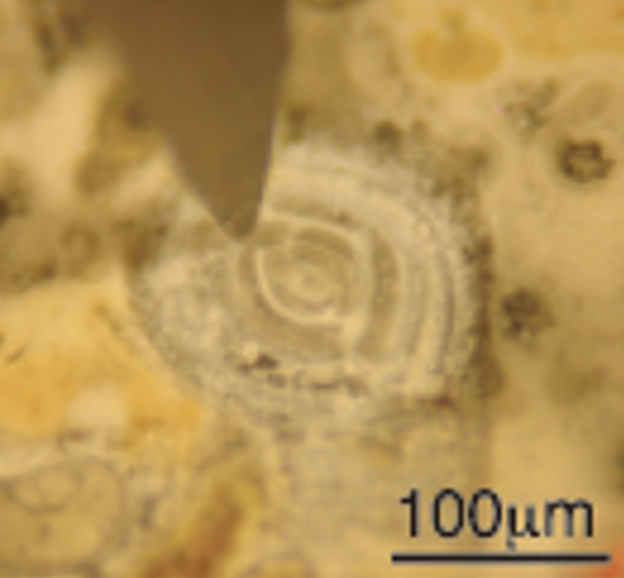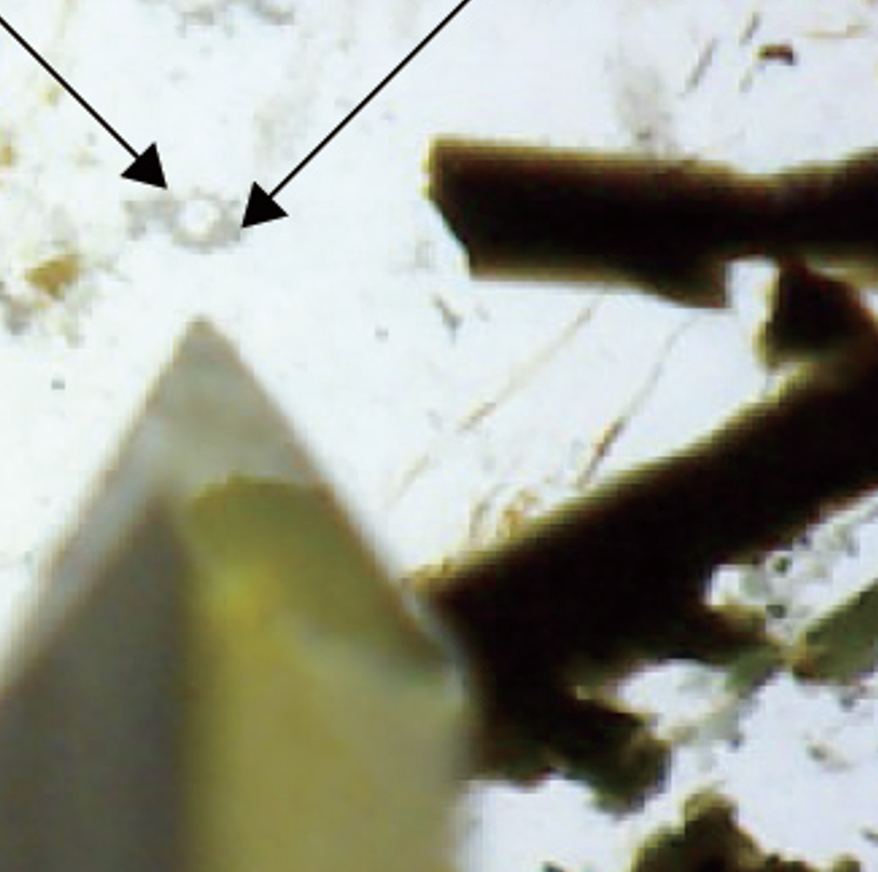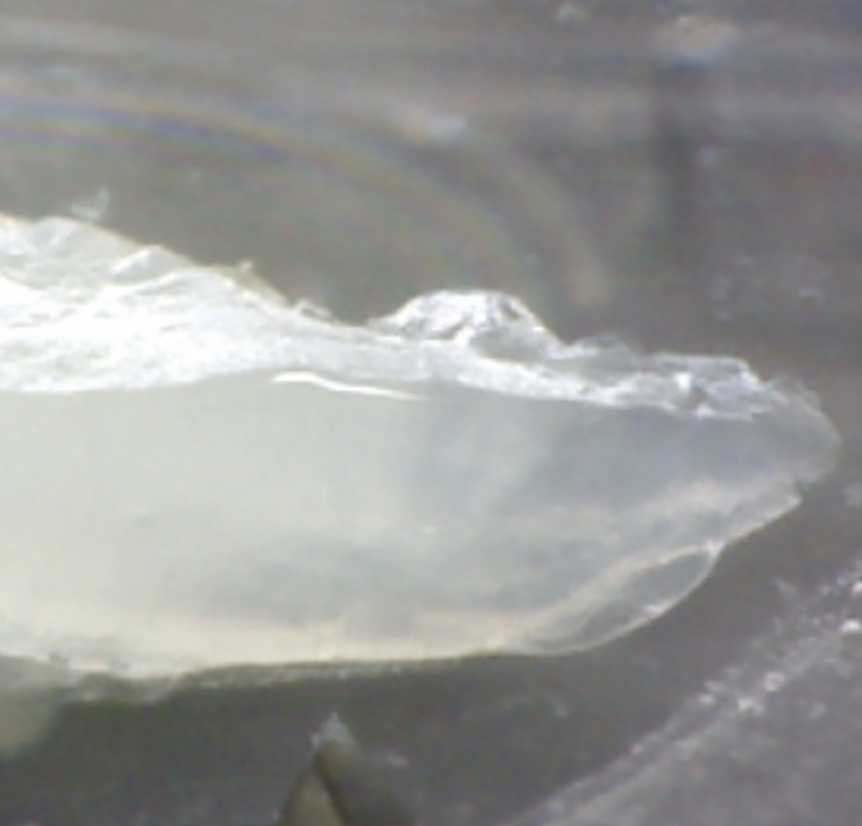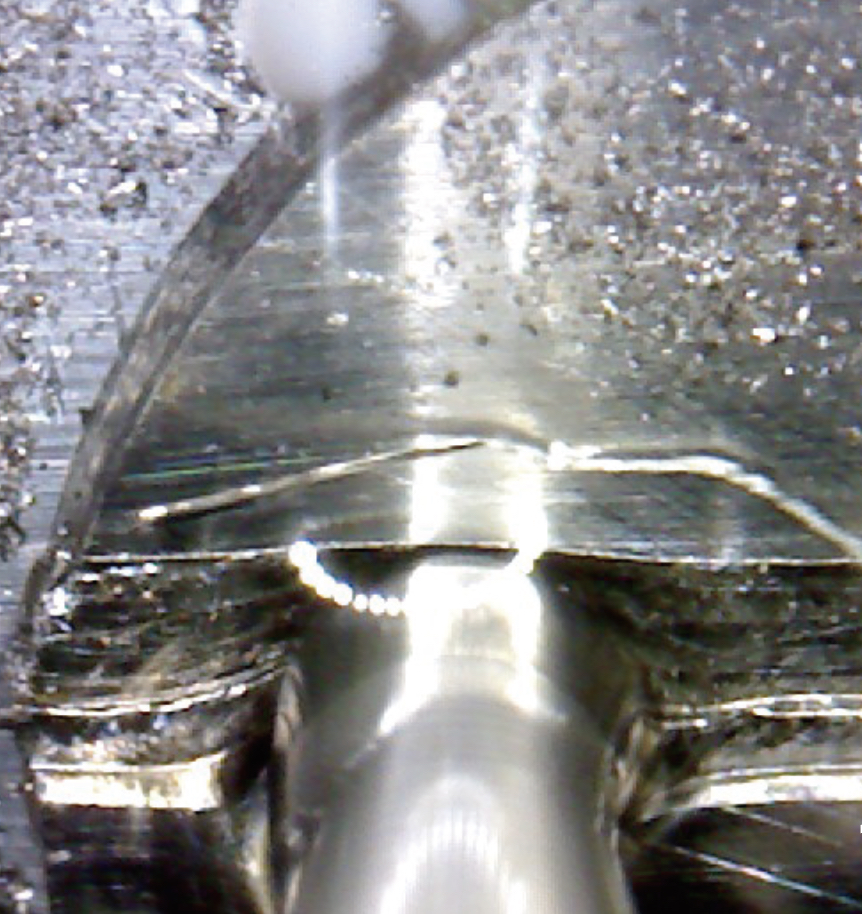Automatic milling along growth lines
Automatic milling that follows growth lines and tissue structure in specimens such as fish otoliths, stalagmintes, corals, shells, minerals, and sediment laminae
We take the catfish otolith as an example. (1) The otolith is removed and a polished specimen prepared. (2) Next, a PC is used to set the coordinates of the growth line along which milling will take place. (3) The coordinates are saved as a text file, and read in by the control software for automatic milling.
This procedure allowed preparation of the chart below, which shows details of the oxygen–carbon isotope ratio in the specimens along the growth lines. The chart shows that these fish change habitats as they mature, moving as juveniles from rivers and streams to more brackish water, and then to the sea. SST and oxygen isotopes at the sea show a good matching.
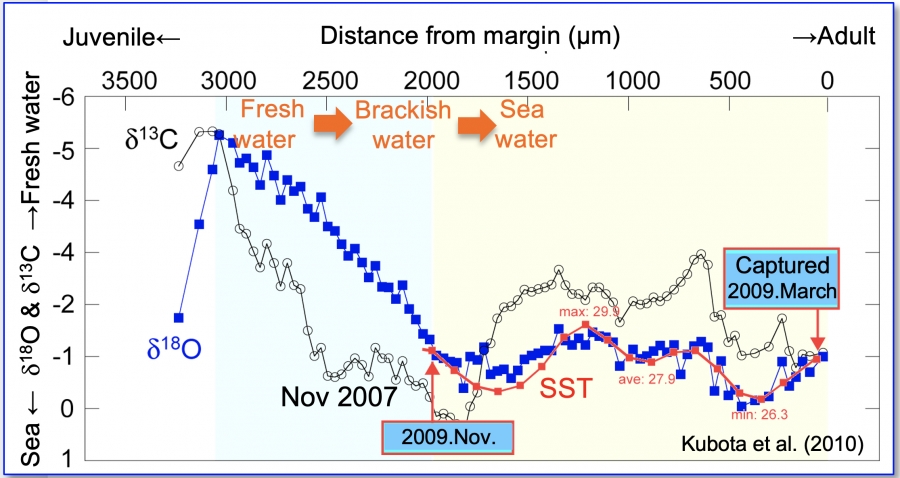
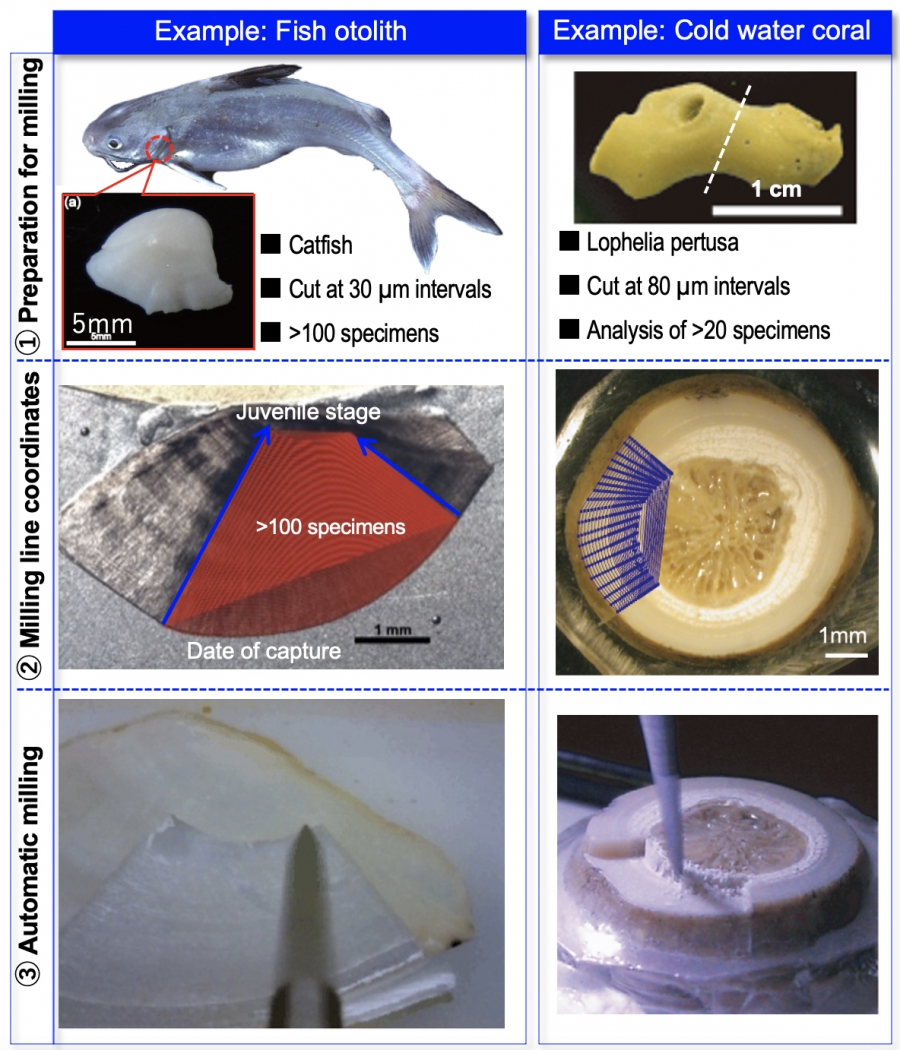
Analysis in the cold water coral example is exactly the same as in the catfish otolith example. Other materials with banded structures such as shells, stalagmites, mineral zonings resulting from diagenesis, and sediment laminae are also well suited to similar analysis.
Automatic milling such as this will commonly use a large number of specimens. The milled powder recovery device KYUSHU-DANJI is extremely useful for the recovery of such ultrafine powders.A
→ See the milled powder recovery device page.
In cases where the milling target is very small, for example, an eel otolith, an extremely sharp bit such as our single-crystal diamond drill bit can be extremely effective.
→ See the “Ultrafine milling of minerals, etc.” usage example.

